When it rains, driving is more dangerous than sunny weather or the like. This risk increases when you ride a motorcycle in the rain because this tool does not have a design that protects the human body, such as a car chassis. Some drivers believe that if rain starts to fall, the garage door should also run away until the sun shines again next spring.
Unfortunately, these people make one of the best impressions of motorbikes as it can be fun to ride in the rain as long as you know what is going to happen and how to change the way of driving accordingly.

For this reason, a list of 7 tips for riding a motorcycle in rainy weather is being developed, which can be used to avoid accidents that could threaten human life, and in addition, material damage can reach such a point if the motorcycle is in irreparable condition.
Read Also: Things to Keep in Mind During a Group Ride
Top 7 Tips on How to Ride Motorcycle in Rain–
1. Always wear safety gear
It is always a good habit to wear the right equipment to avoid inconvenience. Protective and waterproof layer, three-layer jacket. Always wear basic equipment such as a motorcycle helmet, protective gloves, knee pads, riding shoes, and other equipment that helps protect the rider. Gloves are very important in this situation as they allow you to grip well and if your hands get wet they can slip off and end up in an accident.
Whatever combination of equipment you have, make sure it does not interfere with your movement or distract you. For example, you can not use controls with frozen fingers, but extra warm gloves may be too thick and not much better.
Similarly, warmer can be delicious and grilled, but limit your trip to controlling your shoulder. You may need to search for the right equipment, but you will be able to find the right balance between comfort and practical work under the right conditions.
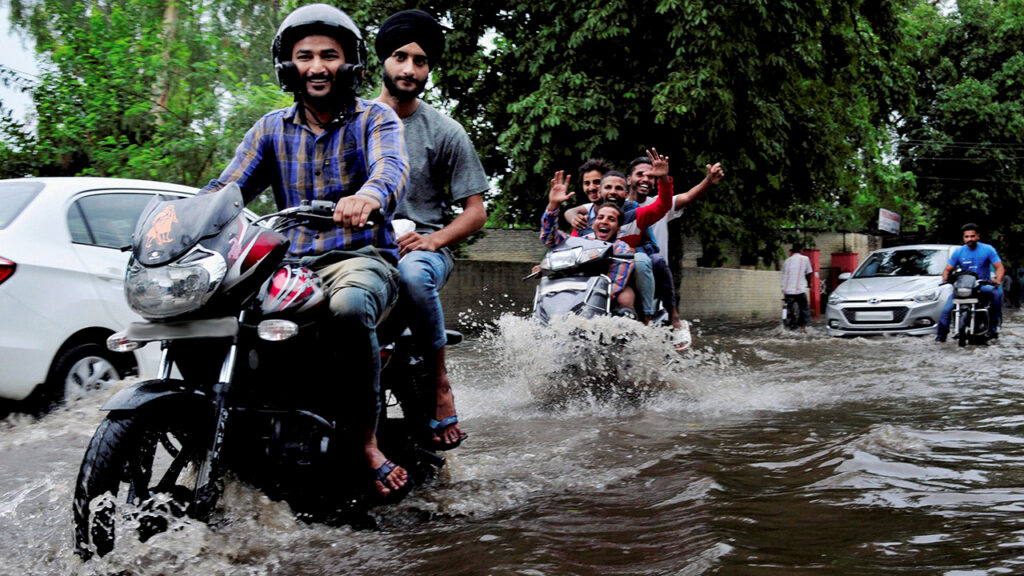
2. Slowly brake on motorcycle in Rain
The brakes are not so sensitive on wet roads, so it is very important to be at a safe distance if it rains. Also, consider your speed. He wants to be able to slow down his confidence when the roads are slippery. Go at the speed that the brakes can handle and always overestimate the time it takes to stop. It is important to never use only the front brakes because they slide the front wheel. If the rear wheel slides you can steer, but if the front wheel starts to slide you are in trouble. If you can apply 60% rear brake and 40% front braking ratio will be fine. Be sure to brake and do not use the brakes as sudden shocks can break the grip.
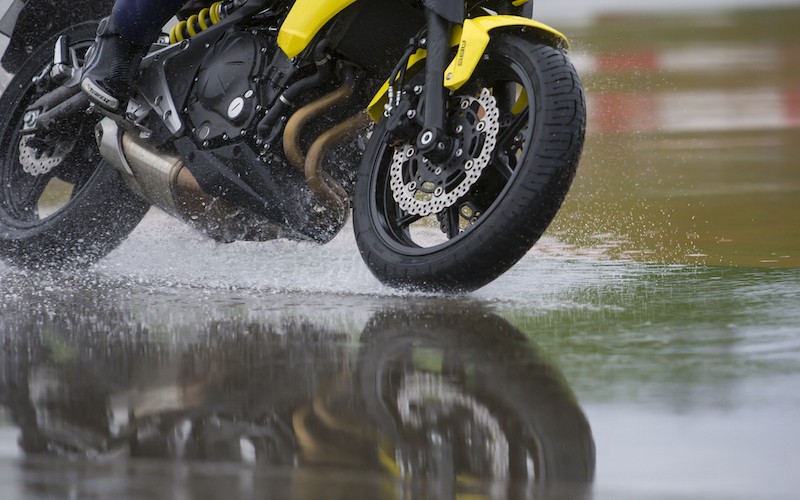
3. Use the rear brake instead of the front
In rainy weather, there is a risk of breaking the front tire, even if you don’t have an ABS braking system, which also guarantees nothing despite better braking quality. Breaking the rear tires allows you to increase maneuverability and driving ability. this is a very important part in Ride a Motorcycle in Rain
4. Always drive with control
During such rainy weather, you may lose control of your motorcycle and have an accident if you drive faster. actions performed on the motorcycle must be performed without problems.
For example, if you Going on a roundabout, drive at low speed to avoid falling to the ground, so you need to drive patiently and calmly.
If you are riding in worse than ideal conditions, change the way you handle your motorcycle. Throttle adjustment should be carried out evenly and at short intervals, use fewer lean angles, gradually pull the brakes and press early so that there is no need to lock the brake lever in the last part of the brake area.
5. Avoid the wet lines
Painted lines often reduce the degree of friction between the tires and the surface. This causes the water to create a layer that almost causes the motorcycle to have poor contact with the ground, the braking ability and maneuverability are so small, why avoid this signal and ride only on the road.
While this may seem obvious, it’s amazing that we see more people driving in wet road areas, even when the surrounding area is dry. The dry coating provides excellent grip and maneuverability, so make sure you’re always on the driest part of the lane.
6. Hold the motorcycle tightly
When the motorcycle gets wet, the crank will be very slippery and therefore it is important to hold it as tight as possible to prevent slip and loss of control on the handle. The risk of such a situation can be compared to driving without driving, but increasing the imbalance so can be fatal.
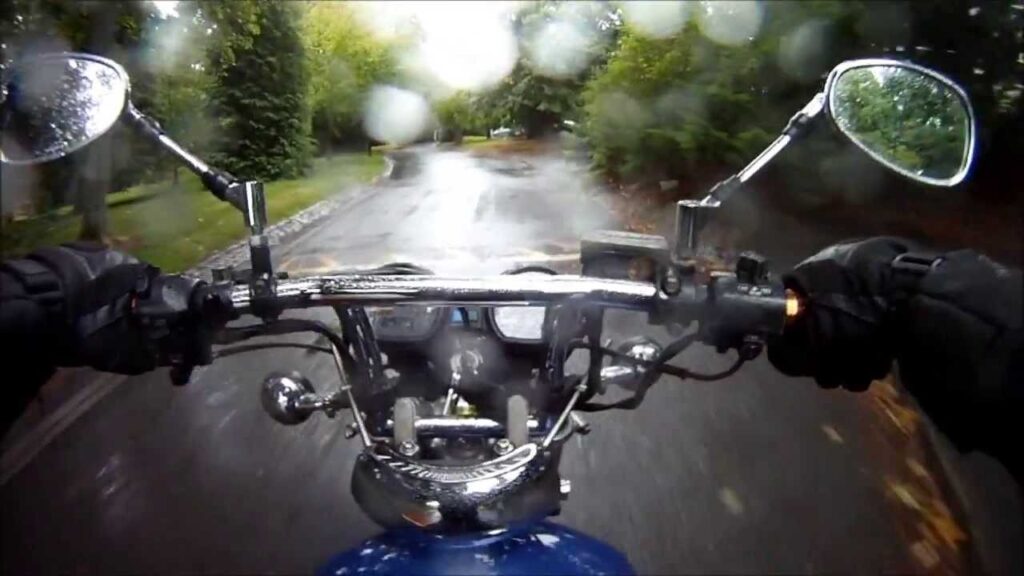
7. Good Tires/Correct PSI
Make sure that the tire is not worn and that the pressure is correct. I respectfully check the tire pressure before each ride, whether it is raining or not. I have recently made it a habit to do this against anyone. One day I came across a rear wheel that had fallen below 15 pounds per square inch and it happened to a normal bike
Also, keep in mind that it takes longer to warm a tire in the rain than it takes to warm. This technique does not allow you to heat the tire even on a dry surface. Stopping and running is the best method of heating the tire and can help reduce the heat more quickly when it rains.
- Preventing and Treating Motorcycle Road Rash Injuries
- Alpinestars Motorcycle Riding Pant Review: Which One to Choose?
- Answer Riding Pants Review: a Look at Their Latest Models
- The Benefits of FXR Heated Riding Pants for Cold Weather Riding
- An Overview of Fly Racing Textile Riding Pants for All-Season Riding


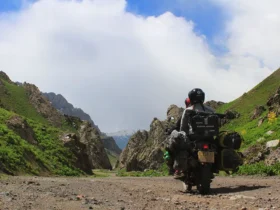

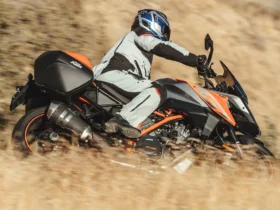
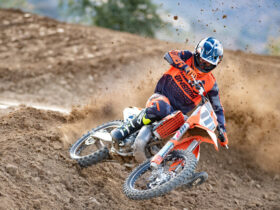
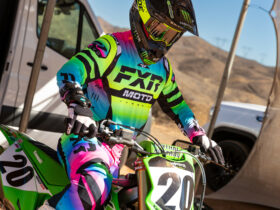

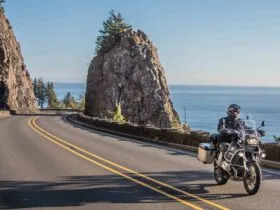

Leave a Review